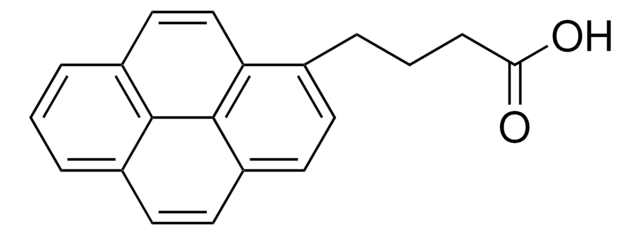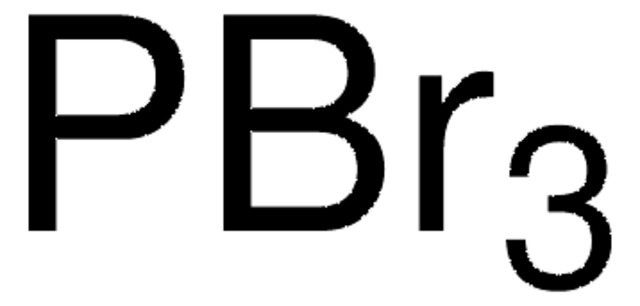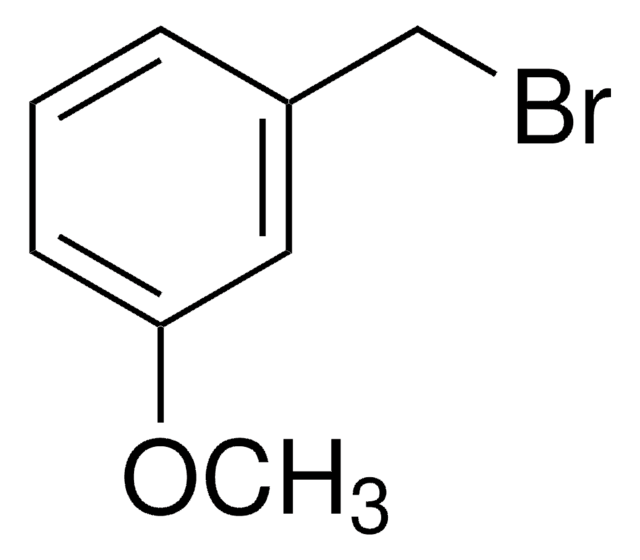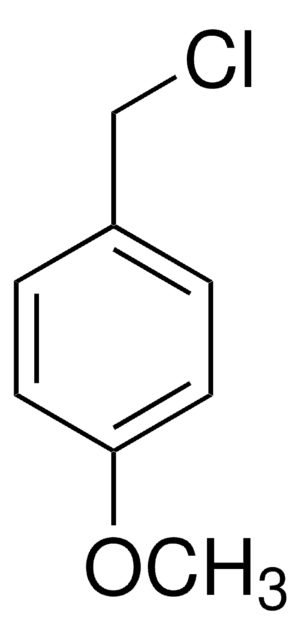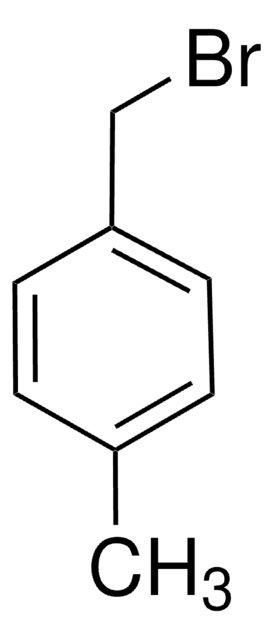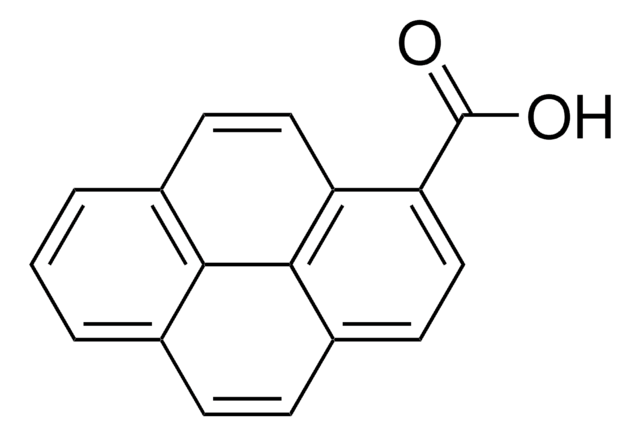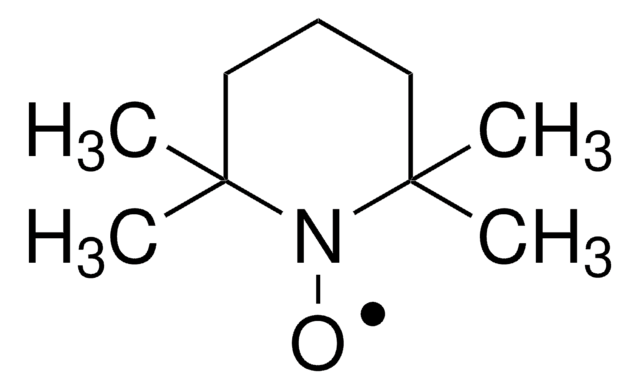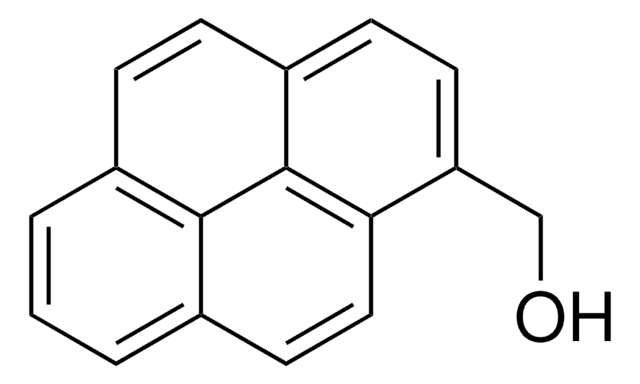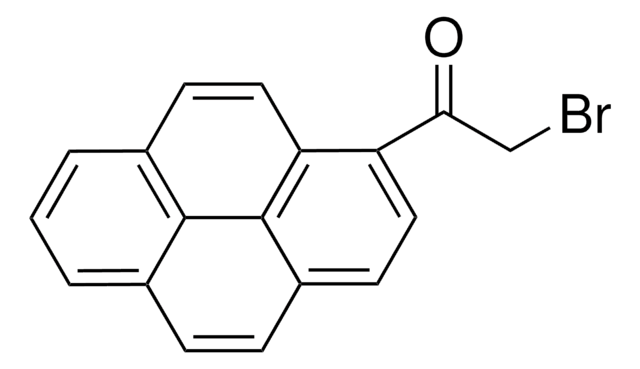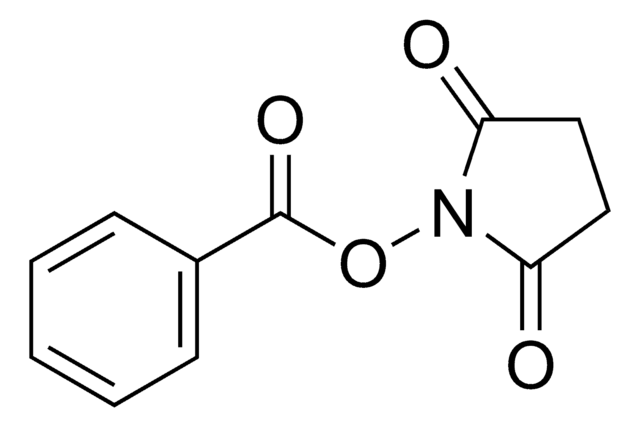457078
1-Pyrenebutyric acid N-hydroxysuccinimide ester
95%
동의어(들):
N-Hydroxysuccinimidyl Pyrenebutanoate; 2,5-Dioxopyrrolidin-1-yl 4-(pyren-1-yl)butanoate
로그인조직 및 계약 가격 보기
모든 사진(2)
About This Item
실험식(Hill 표기법):
C24H19NO4
CAS Number:
Molecular Weight:
385.41
MDL number:
UNSPSC 코드:
12171500
PubChem Substance ID:
NACRES:
NA.47
추천 제품
Quality Level
분석
95%
양식
powder, crystals or chunks
구성
Carbon: 70.7-78.9%
기술
titration: suitable
색상
faint beige
mp
132-136 °C (lit.)
응용 분야
diagnostic assay manufacturing
hematology
histology
저장 온도
room temp
SMILES string
O=C(CCCc1ccc2ccc3cccc4ccc1c2c34)ON5C(=O)CCC5=O
InChI
1S/C24H19NO4/c26-20-13-14-21(27)25(20)29-22(28)6-2-3-15-7-8-18-10-9-16-4-1-5-17-11-12-19(15)24(18)23(16)17/h1,4-5,7-12H,2-3,6,13-14H2
InChI key
YBNMDCCMCLUHBL-UHFFFAOYSA-N
일반 설명
1-Pyrenebutyric acid N-hydroxysuccinimide ester (PANHS) is an aromatic chemical, which is also known as PBSE. It is a yellow solid, that is soluble in chloroform, N,N dimethyl formamide, dimethyl sulfoxide, and methanol.
애플리케이션
1-Pyrenebutyric acid N-hydroxysuccinimide ester is used in detecting nucleic acids, characterizing cyclodextrin based polyrotaxanes, and immobilizing proteins etc.
기타 정보
1-Pyrenebutyric acid N-hydroxysuccinimide ester has been used for NAD+ tethering on multi-walled carbon nanotubes (MWCNTs). It has been used in the preparation of laccase cathode.
신호어
Warning
유해 및 위험 성명서
Hazard Classifications
Eye Irrit. 2 - Skin Irrit. 2 - STOT SE 3
표적 기관
Respiratory system
Storage Class Code
11 - Combustible Solids
WGK
WGK 3
Flash Point (°F)
Not applicable
Flash Point (°C)
Not applicable
개인 보호 장비
dust mask type N95 (US), Eyeshields, Gloves
이미 열람한 고객
Thien-Toan Tran et al.
Biosensors & bioelectronics, 147, 111766-111766 (2019-10-28)
Citrus greening, or Huanglongbing (HLB), is currently the most devasting disease of citrus, creating unprecedented crisis for the multibillion-dollar global citrus industry. To-date, there is no effective cure and disease management relies on early detection and removal of infected trees.
Nguyen Thanh Tung et al.
Scientific reports, 7(1), 17881-17881 (2017-12-22)
Biosensors employing single-walled carbon nanotube field-effect transistors (SWCNT FETs) offer ultimate sensitivity. However, besides the sensitivity, a high selectivity is critically important to distinguish the true signal from interference signals in a non-controlled environment. This work presents the first demonstration
Niazul I Khan et al.
Sensors (Basel, Switzerland), 21(4) (2021-03-07)
Aptamer-immobilized graphene field-effect transistors (GFETs) have become a well-known detection platform in the field of biosensing with various biomarkers such as proteins, bacteria, virus, as well as chemicals. A conventional aptamer immobilization technique on graphene involves a two-step crosslinking process.
Sze Shin Low et al.
Analytica chimica acta, 903, 131-141 (2015-12-29)
Graphene/zinc oxide nanocomposite was synthesised via a facile, green and efficient approach consisted of novel liquid phase exfoliation and solvothermal growth for sensing application. Highly pristine graphene was synthesised through mild sonication treatment of graphite in a mixture of ethanol
Nikita Nekrasov et al.
Nanomaterials (Basel, Switzerland), 11(1) (2021-01-21)
In this work, we report a novel method of label-free detection of small molecules based on direct observation of interferometric signal change in graphene-modified glasses. The interferometric sensor chips are fabricated via a conventional wet transfer method of CVD-grown graphene
자사의 과학자팀은 생명 과학, 재료 과학, 화학 합성, 크로마토그래피, 분석 및 기타 많은 영역을 포함한 모든 과학 분야에 경험이 있습니다..
고객지원팀으로 연락바랍니다.